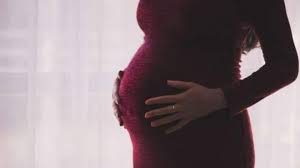Our programs work at the foundation level of brain development.

Brain development during pregnancy
During pregnancy, the baby’s brain development is reliant on primitive, infant reflexes. These are automatic responses that the baby cannot control.
Their main function is to aid the birth process and support survival after birth. If they persist into childhood they limit conscious control.
They also :
- help to maintain the correct position in utero.
- move the baby’s body, with automatic responses, exercising the muscles and joints, like a baby gym!
- establish processes, such as the function of the kidney and bladder.
Two examples of these primitive, infant reflexes are:
The Spinal Pereze and Spinal Galant Reflexes:
- These provide movement to help the birth process and move the spine. They also begin the functioning of the kidneys and bladder.
- If they persist past babyhood, they can limit conscious control resulting in possible issues with bedwetting, attention, being still, anxiety, co-ordination, slow processing, sensitivity to textures of clothing and more.
- C-section births, breech, fast and assisted births remove or reduce the use of the spinal reflexes in the birth process. So, the reflexes often persist.
Asymmetric Tonic Neck Reflex (ATNR):
This reflex assists the baby in turning during vaginal delivery.
It may be absent and cause difficulty in delivery. It relates to the turn of the head that affects the position of the limbs of the left and right of the body.
- If this reflex persists, it can limit midline and cross-lateral movement and the processing of information. This relates to the restriction of connections of the two sides of the brain.
- Issues can occur with complex activities, such as reading and physical movements in dance and sport, and lack of control of the limbs as the head turns.
- Slow processing is often a common feature.
- It is often linked with dyslexia.
Other Infant Reflexes:
Many reflexes that persist affect fine and gross motor movement, language development, emotional control, fears, co-ordination, scanning, distance and close vision, hand-eye co-ordination, sensory issues, memory, sleep, and anxiety in its many forms – withdrawal, aggression, frustration, controlling behaviour…. and more.
The Role of the BrainChild Developmental Program
At BrainChild, we first find out which reflexes are still active and their severity. Then we help the identified reflexes to integrate, using active, fun activities. With practice, these infant reflexes cease to be active, thus releasing the brain to mature.
The neuro-plasticity of the brain allows changes to occur. This the ability of the brain to form and reorganize synaptic connections in the brain, especially in response to learning or experience or following injury.
We were hoping for any improvement at all. But I didn’t think it would make a difference. It’s made a massive difference.” Dad speaks about Jack who has a diagnosis of autism.
EBO for Schools
Our schools program has been developed from our established BrainChild Developmental Program. The aim is to reach the many children who might never have the opportunity to take part in an individual program.

You must be logged in to post a comment.